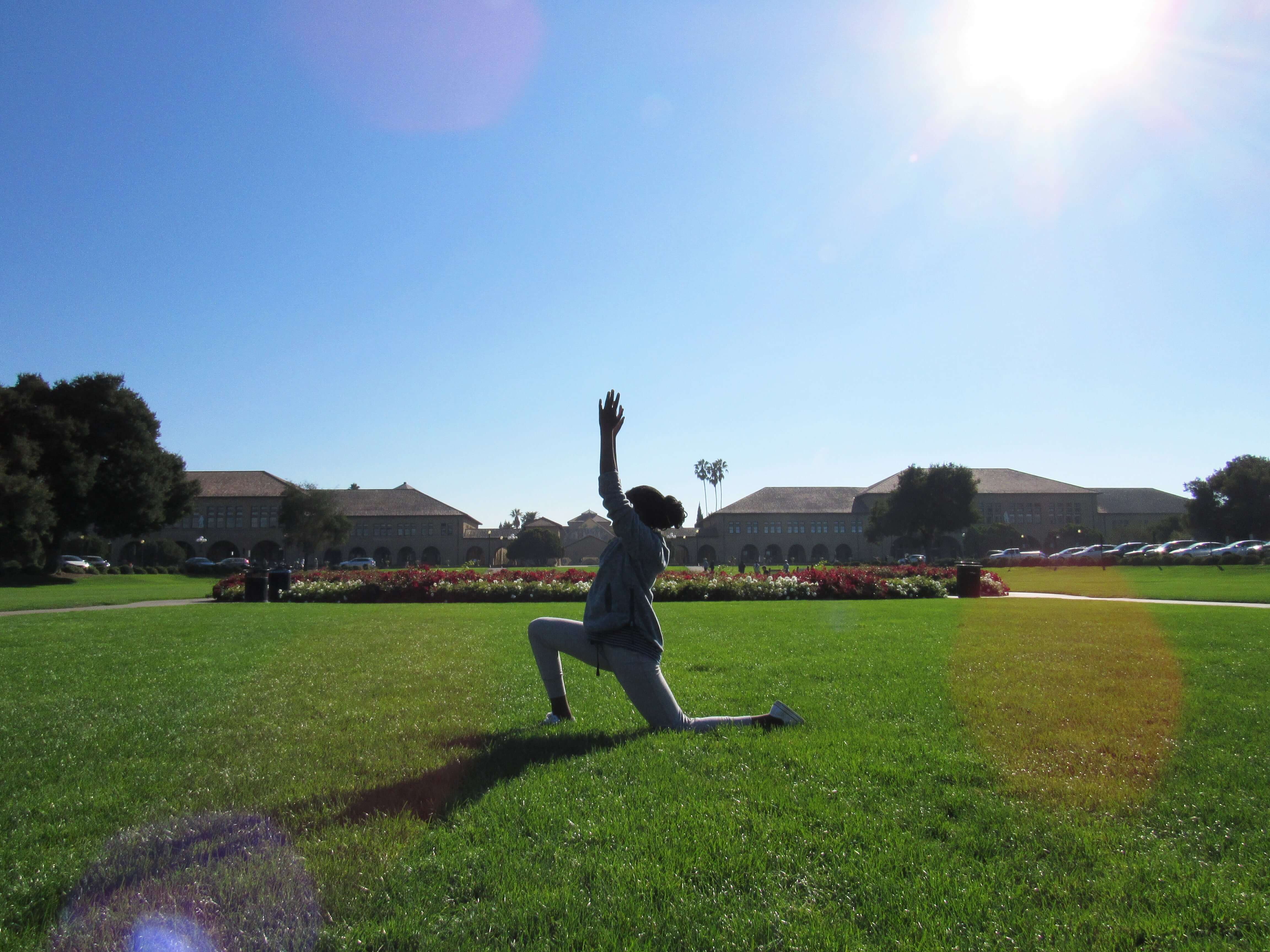You, reach your arms towards the ceiling. No, use your shoulder blades. But reach up. And remember to use your shoulder blades. Are you breathing? Breathe, deeply. Now your reach is failing. Time’s up; move on… You send your hands, together like a prayer, down towards the center of your chest. You hope your elbows are making the straight line they ought to. This prayer pose feels ridiculous. Self-conscious, you chuckle to yourself, and your form loosens. Now in goes the breath — sucking into you the world’s energy like a straw through your nose — and out goes the breath. That was hard, but you can’t dwell; you need to transition into downward dog pose… You stretch, you strain. You feel like you’re doing it wrong. Readjusting yourself, the stretch moves somewhere further up in your body. “Is this where I’m supposed to be feeling it?” “Am I finally doing it right?” The stretching shifts in location again, this time without your intending it to. “Oh no.” “What’s the right way to feel in downward dog?” “What is a ‘downward dog’?” “What’s the right way to feel in any of this?” Inside your head, you cry for help — the yoga demons have got you in their clutch.
Of course yoga isn’t easy! It’s scary. Yoga, in all its complexity, can feel as powerfully intoxicating a brew as ayahuasca, and that may inspire fear in our hearts. Sometimes the voices can be vicious: the “I can’t do this,” the “why bother,” the “I’m not built for this.” But being afraid is a non-sequitur; that’s being afraid of ourselves, selves that are worth taking a moment to admire unabashedly. (Go on.) We aren’t “bad,” society merely engineers us to be amateurs; it remains largely uncommon for us in our perpetual business to take a moment to scan our bodies and be aware of how they feel, or to sit down and simply allow our thoughts and worries to self-elucidate. How can we expect ourselves to be experts in that which we have near-nil experience? Ease into it. Awareness and opening up take center stage in the practice of yoga, where stretching while straining is thinking while breathing is opening up while giving our all. That sounds overwhelming because it is. It also sounds rewarding if you listen closely.
Great sacrifices yield great rewards. Sacrifice ensures we have earned our badges, our spoils from the battles with the yoga demons. We are worth being proud of; not that we require validation, but we know that our shiny badges are tangible proof of that. Our battle-born badges carry with them wisdom relevant for our battles with practically every other demon out there, like the social-situation demons or the body-image demons. Yoga makes itself a metonym for life — parallel in its difficulty and ease, discords and concords, peaks and valleys — so that the lessons we derive from yoga make themselves relevant in our everyday lives.
Among the lessons I am deriving: keeping composure in the face of life’s demons; harnessing the power of breath to guide my emotions; maintaining self-control under life’s various pressures; becoming comfortable with my body and my self; being aware of myself and my body. It takes a fight, a constant effort in the day-to-day, to transcend beyond the day-to-day. To put 100 percent into every session of yoga, knowing the challenge that lies ahead, can be scary. But yoga parallels life … so it helps to not be afraid of yoga demons.
Contact Coco Hergenroeder at khusbear ‘at’ stanford.edu.
